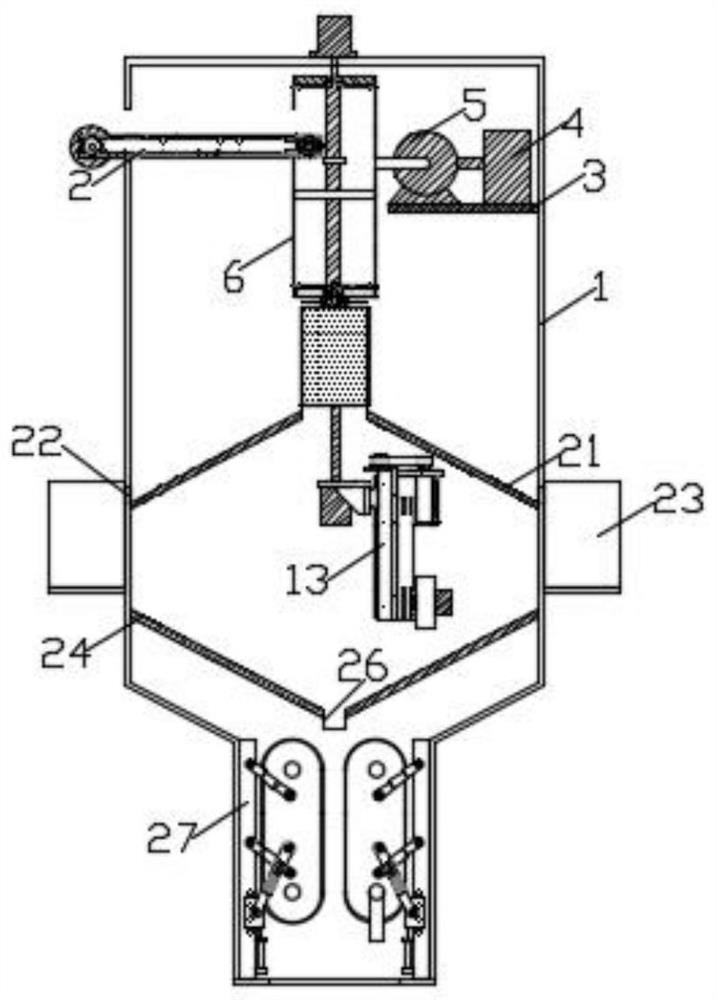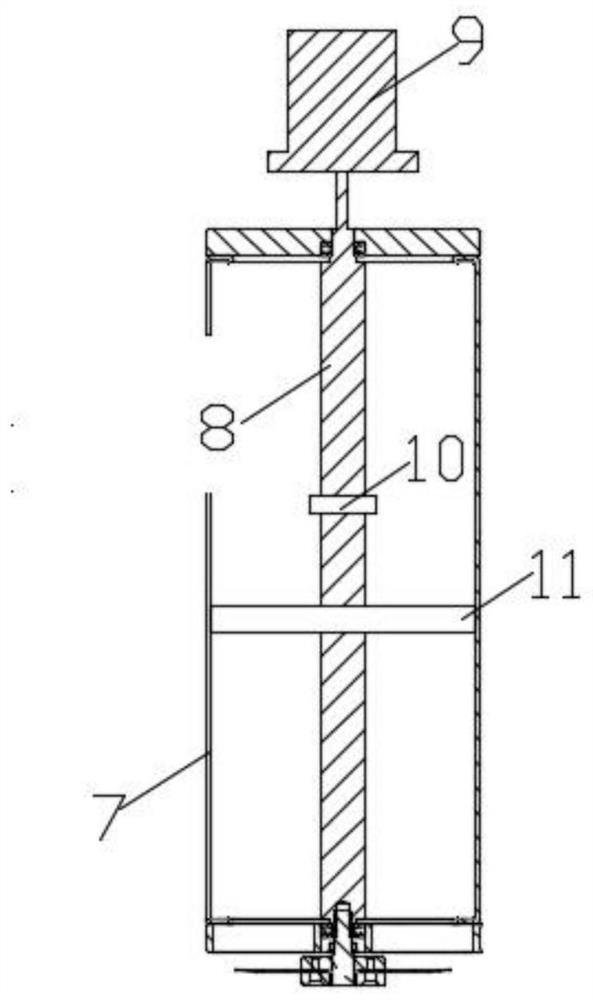Preparation method of flame-retardant rubber
A flame-retardant, rubber-based technology, which is applied to liquid cleaning methods, cleaning methods and utensils, chemical instruments and methods, etc., can solve the problems of low cleaning efficiency, inability to collect cleaning liquid efficiently, and low rubber processing efficiency. Achieve good flame retardant performance
- Summary
- Abstract
- Description
- Claims
- Application Information
AI Technical Summary
Problems solved by technology
Method used
Image
Examples
Embodiment 1
[0037] A method for preparing flame-retardant rubber, comprising the steps of:
[0038] Step 1: In parts by weight, weigh 1 part of surface treatment agent, 40 parts of magnesium aluminum hydrotalcite, 10 parts of ammonium polyphosphate, 20 parts of magnesium hydroxide, and 80 parts of high viscosity α, ω-dihydroxy polydimethylsilane Oxane, 20 parts of high-viscosity silicone oil, 100 parts of nano-calcium carbonate, 20 parts of low-viscosity α, ω-dihydroxy polydimethylsiloxane, 15 parts of low-viscosity silicone oil, 50 parts of iron black, 50 parts of silicone oil, 3 1 part of crosslinking agent, 1 part of tackifier, 0.03 part of catalyzer, surface treatment is carried out to magnesium aluminum hydrotalcite with surface treatment agent, then stir, after stirring evenly, add ammonium polyphosphate and magnesium hydroxide, obtain filler after blending evenly;
[0039] Step 2: Stir and mix high-viscosity α, ω-dihydroxy polydimethylsiloxane, high-viscosity silicone oil and nano-...
Embodiment 2
[0048] A method for preparing flame-retardant rubber, comprising the steps of:
[0049] Step 1: In parts by weight, weigh 3 parts of surface treatment agent, 60 parts of magnesium aluminum hydrotalcite, 20 parts of ammonium polyphosphate, 50 parts of magnesium hydroxide, and 120 parts of high viscosity α, ω-dihydroxypolydimethylsilane Oxane, 30 parts of high-viscosity silicone oil, 150 parts of nano-calcium carbonate, 40 parts of low-viscosity α, ω-dihydroxy polydimethylsiloxane, 30 parts of low-viscosity silicone oil, 60 parts of iron black, 60 parts of silicone oil, 8 1 part of crosslinking agent, 6 parts of tackifier, 0.12 part of catalyzer, carry out surface treatment to magnesium aluminum hydrotalcite with surface treatment agent, then stir, after stirring evenly, add ammonium polyphosphate and magnesium hydroxide, obtain filler after blending evenly;
[0050] Step 2: Stir and mix high-viscosity α, ω-dihydroxy polydimethylsiloxane, high-viscosity silicone oil and nano-cal...
PUM
 Login to view more
Login to view more Abstract
Description
Claims
Application Information
 Login to view more
Login to view more - R&D Engineer
- R&D Manager
- IP Professional
- Industry Leading Data Capabilities
- Powerful AI technology
- Patent DNA Extraction
Browse by: Latest US Patents, China's latest patents, Technical Efficacy Thesaurus, Application Domain, Technology Topic.
© 2024 PatSnap. All rights reserved.Legal|Privacy policy|Modern Slavery Act Transparency Statement|Sitemap



